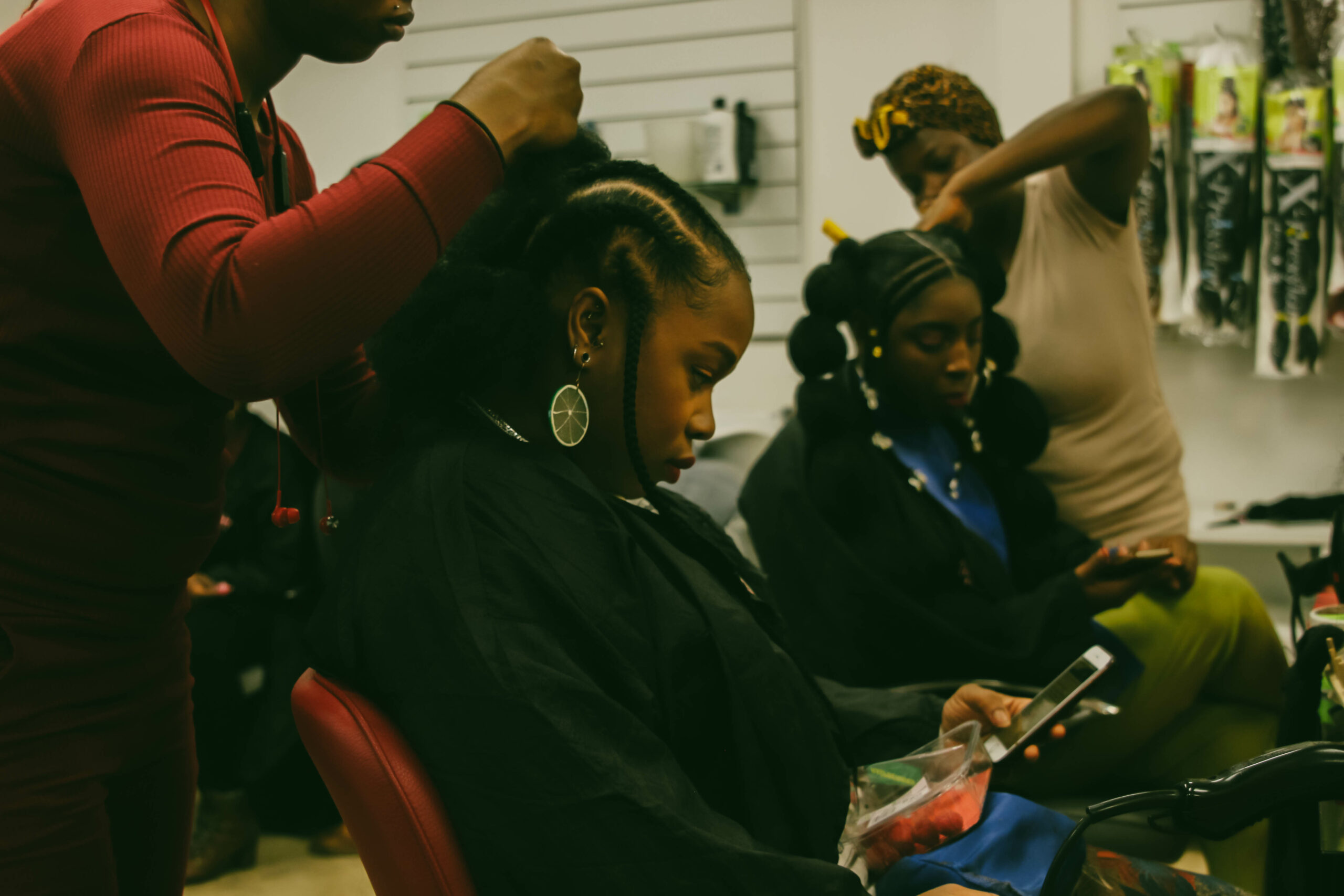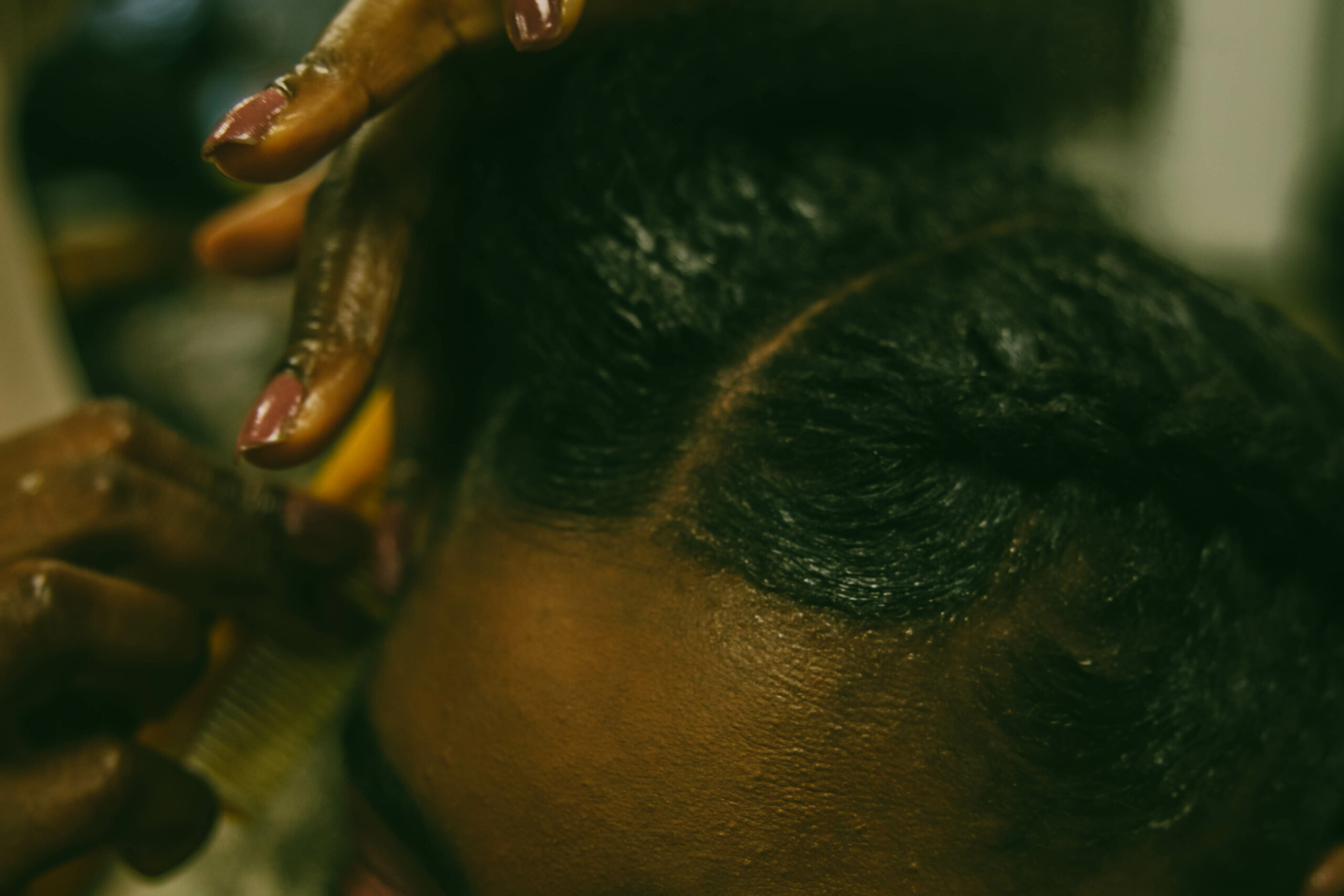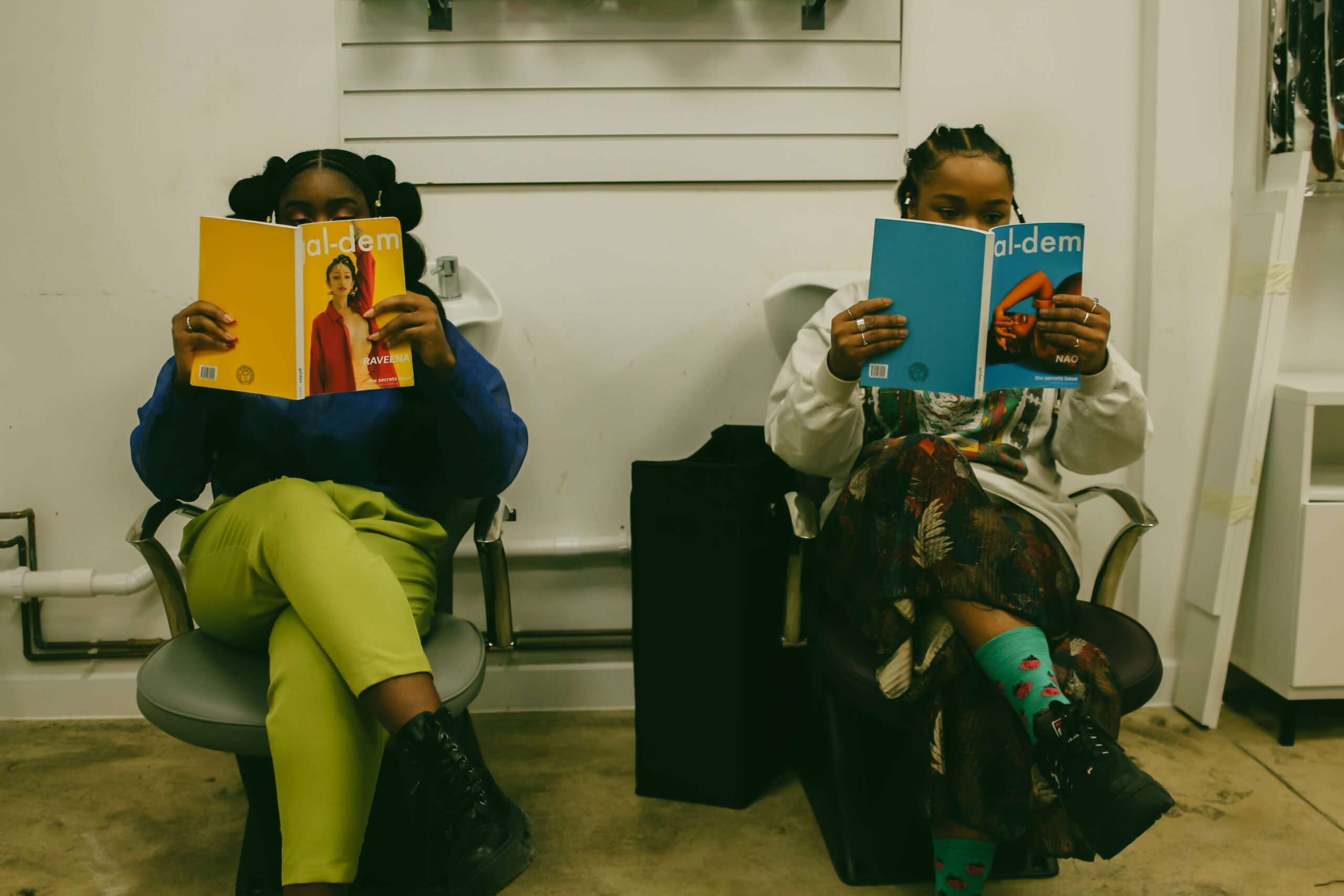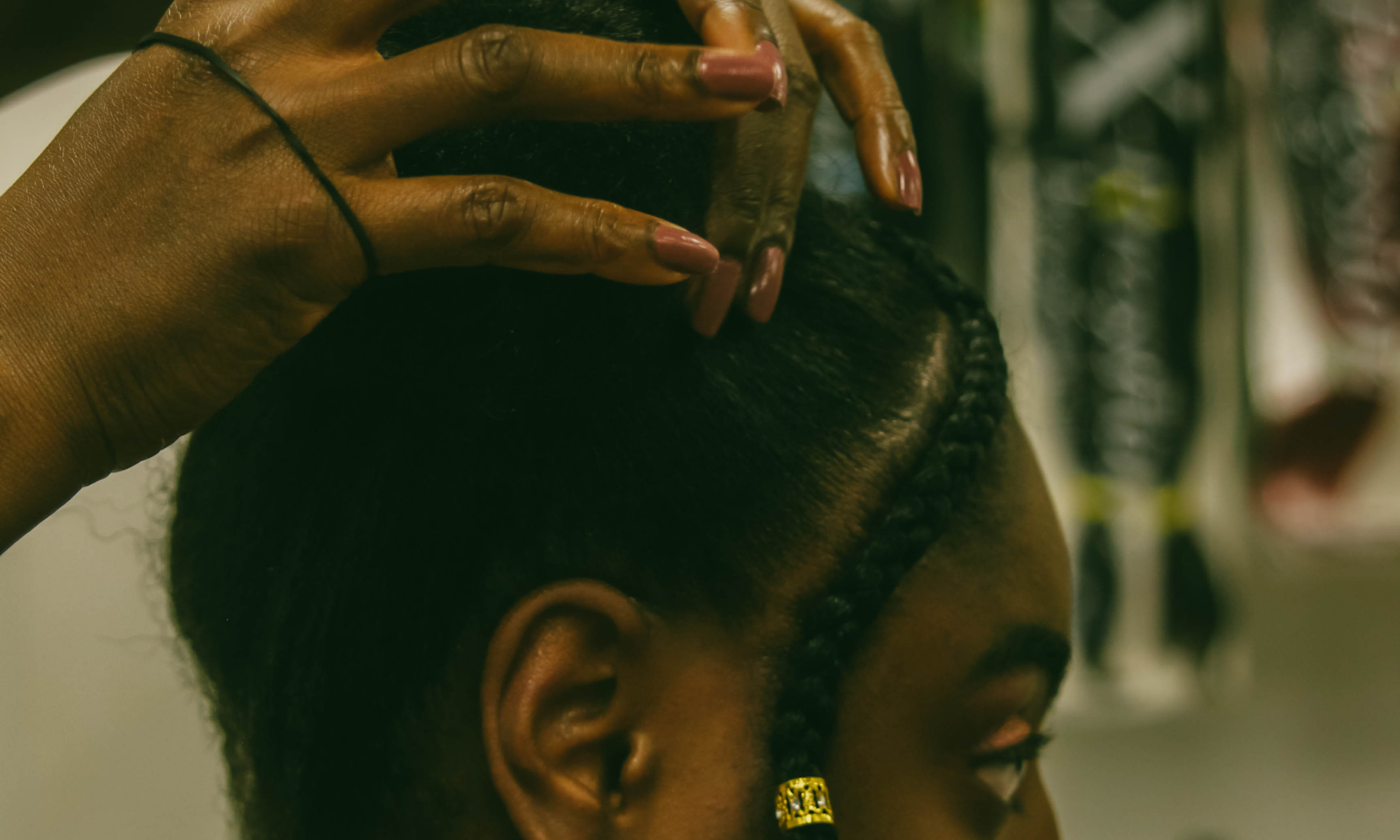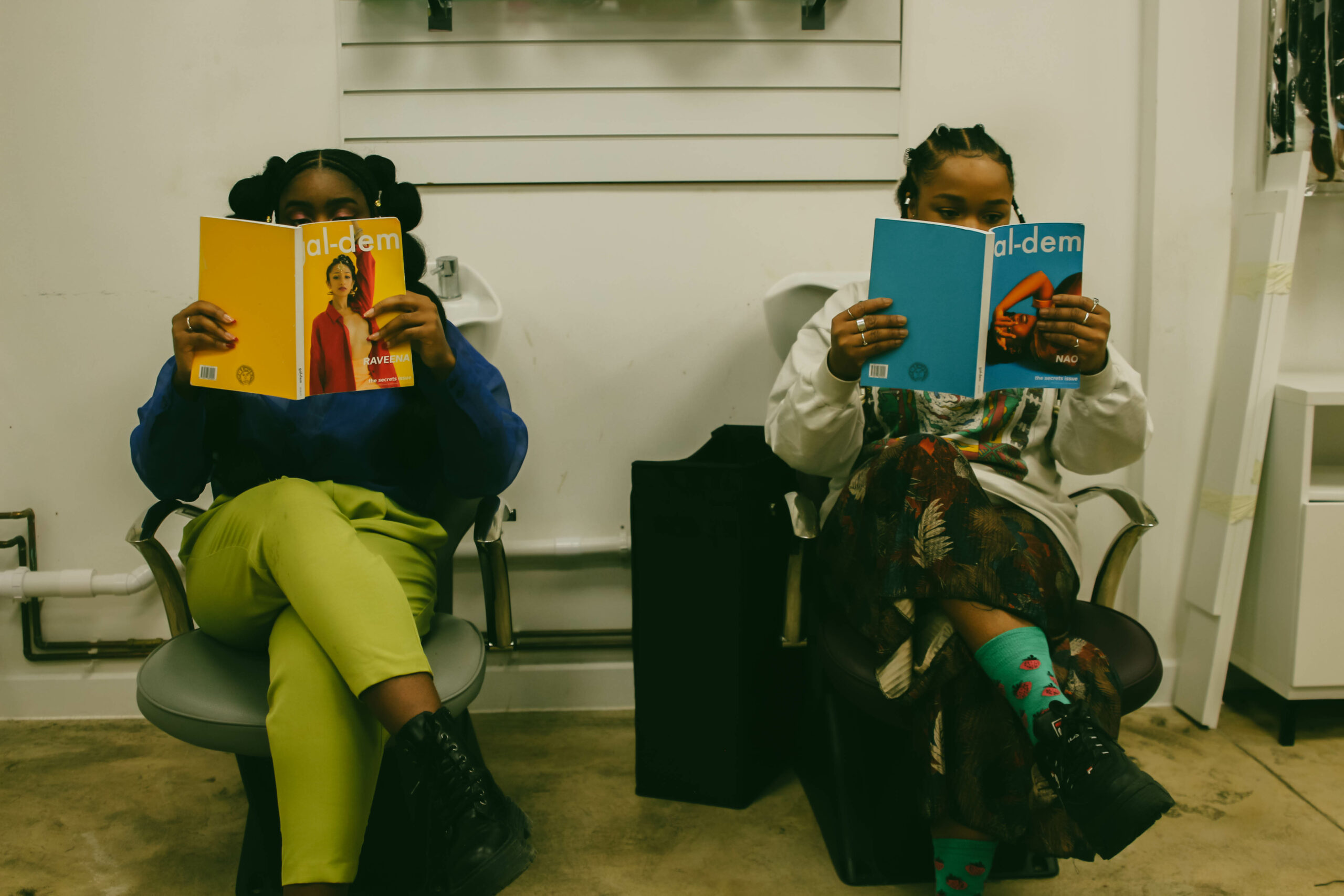Allah, Asè and Afros: Black Muslim women on hair
Adama Juldeh Munu explores the distinctive experiences of hijab-wearing Black Muslim women and hair care.
Adama Juldeh Munu
25 Sep 2021
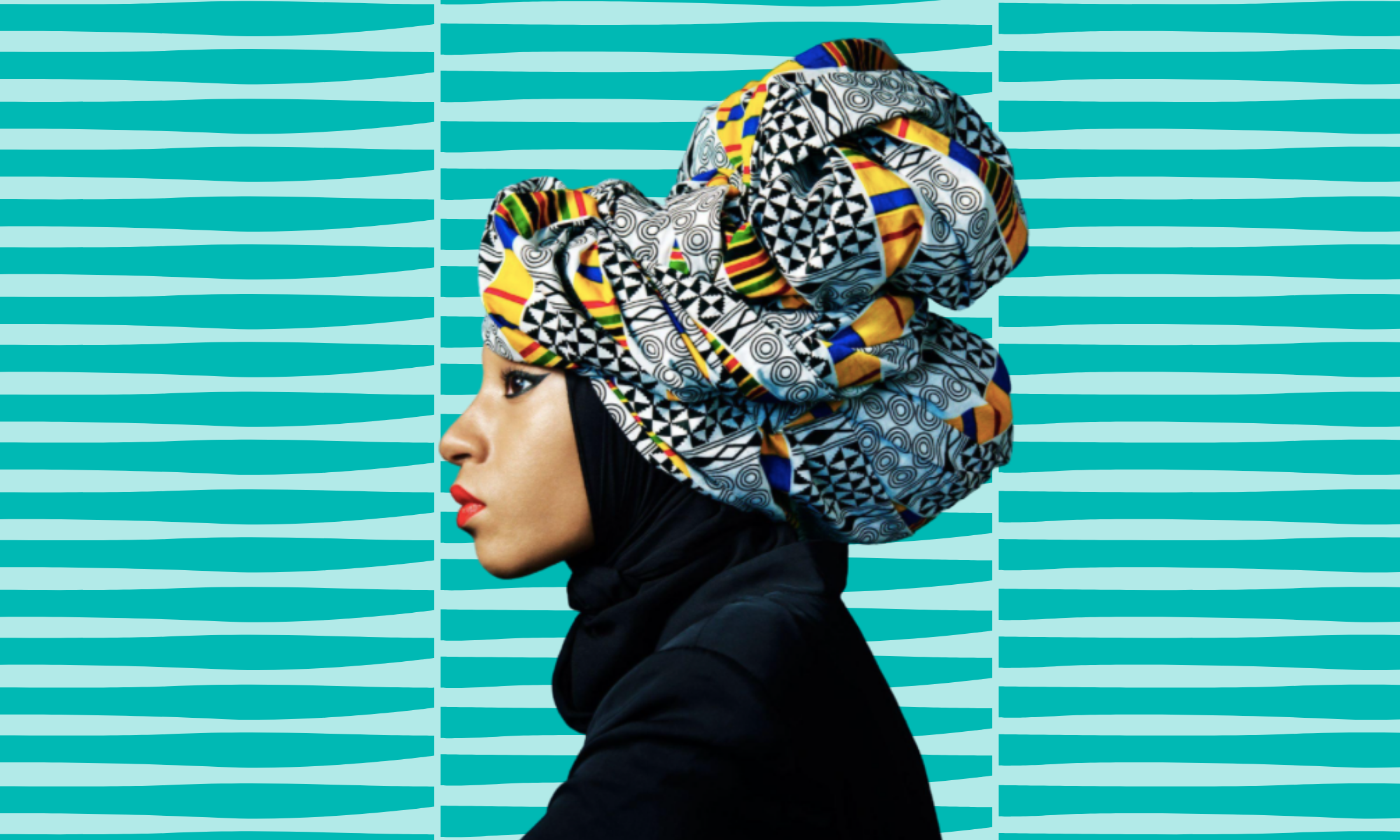
Photography by Nailah Lymus
Black hair is a language with many dialects. It speaks of ethnic markers, social standing, histories, joys and complexities. It’s a language that has historically been misunderstood, misinterpreted and even colonised. Today Black women are discovering ways of speaking their ‘hair truths’, by going natural, learning how to properly maintain chemically straightened hair, doing the big chop or trying out locs. Veiled Black Muslim women who mostly have ‘type 4′ hair hold a unique perspective on the relationship between spirituality and hair that’s rarely discussed. In doing so, they are developing their own hair narratives to centre their faith and cultures while broadening Black hair discourses.
While the hijab is no longer unheard of in the fashion industry – thanks to Black Muslim models and designers like Halima Aden, Ayana Ife and Nailah Lymus – discussions around hair involving Black Muslim women have been slow to take off in the mainstream.
And that’s in spite of the popularity of headwraps and the fact that historically Black hair and head coverings go hand in hand. Its history can be traced back to the Nubian empire and ancient Egyptians. And among the Tuareg of Mali, the headwrap for men and women is an extension of the hair. For Nigerian Yoruba people and ethnic groups in Sierra Leone, geles or enkeychas are worn during weddings. In Ghana, dukus are worn on religious days by Muslims, Seventh-Day Adventists or Sunday church-going Christians.
Headwraps were also historically used to distinguish enslaved Africans under the Negro Act of 1735. Similarly in South Africa, the doek was imposed on Black women to control their so-called exoticism from white men. The headwrap became a powerful symbol of autonomy, with nods to African heritage, during the US civil rights movement, sported by the likes of Nina Simone. Later, it was picked up by cultural figures such as Queen Latifah and became symbolic of Black pride.
“There’s just a lot of intermingling of what it is to be Black, what it is to be Muslim, and what it is to be a woman”
Imani Bashir
Imani Bashir is a Black American Muslim and travel writer based in Mexico. She explains there’s always been a distinctive relationship between head covering, Blackness and faith in the US. “I honestly believe hijab has an ancestral component that a lot of people don’t know and don’t realise. As somebody who comes from multi-generations of Black Muslims in the US, there is a history of Black Muslims who kept their deen (religion) by covering themselves, covering their hair, fasting during the month of Ramadan and during slavery. There’s just a lot of intermingling of what it is to be Black, what it is to be Muslim, and what it is to be a woman.”
Dalilah Baruti is the owner of ‘Hug My Hair’ which specialises in hair care products and is the author of How To Look After Your Natural Hair In Hijab which discusses the theological premise for hair care in Islam. Not all Muslim women cover their hair, but those who do see it as an obligation. While Dalilah does not suggest that selected verses from the Qur’an refer specifically to Black hair, she uses them to show how Black people’s variations are praised when God speaks about the creation of man. The Prophet Muhammad is also quoted as saying, “Whoever has hair should honour it.”
It’s why when I first decided to cover my hair at 15 years old, it was perplexing to hear my Black non-Muslim friends say, “At least you don’t have to worry about doing up your hair all the time.” It felt jarring that they assumed I would not devote time, love and care to my hair, just because the world at large wasn’t seeing it. At the time, it never occurred to me until I read this passage in Emma Dabiri’s book, Don’t Touch My Hair, that our hair needs time regardless of whether it is covered or not.
“The time it takes to do Afro hair is, quite frankly, the time that is required to do it…Our hair continues to be a space in which the fault lines between an imposed European system and black bodies’ resistance to that system are exposed and played out in real-time.” That system rewards time and labour spent on rampant profit and consumption.
It’s a sentiment 29-year-old, Nabiirah Kaseruuzi, shares. “It’s a matter of self-love to have the patience to do your hair when you come out of the shower even though you know it will be covered,” says Nabiirah, whose family originates from Rwanda. “There’s always a temptation to be negligent about maintaining your hair when you first start wearing hijab, and I was no exception,” Nabiirah tells me. “The question I had to ask myself is when I maintain and style my hair, is it for me, or the approval of others? I was taught the importance of self-care from a young age, so learning to groom my hair regularly, regardless of whether people see it or not, became a priority. Doing this brings me joy and makes me feel even more gratified to be a hijab-wearing woman.”
Imani did not always veil, but she appreciates how finding the time for hair care has little correlation with the decision to cover..“I love getting my hair done when I have the opportunity to do so and I think more so me being a mum and not necessarily having time to do it is as a result of that and not necessarily because I wear hijab. Now granted, I do make sure that I go at least once every two months and I get my hair blown out by my Dominican aunties.”
“It’s a matter of self-love to have the patience to do your hair when you come out of the shower even though you know it will be covered”
Nabiirah Kaseruuzi
However, when 30-year-old Khadijah Antron who is Afro-Latina, first converted to Islam and decided to wear a hijab, she found it challenging readjusting her hair-care regimen – especially while living in Turkey, a Muslim majority country with a small Black population. “I didn’t have to cover my hair [before],” she recalls. “Covering it causes it to dry [out] because Turkey doesn’t have certain underscarves. The ones they do sell are expensive and there isn’t much in regards to hijab products that cater to natural hair and Black women. But I do all this for Allah and hopefully, the [wider] Muslim community considers [catering to] natural hair women.”
To help navigate “coils, kinks and hijab pins”, the Instagram platform 4c hijabi educates Black Muslim women on the science of hair growth and the ways it ties into their lifestyles. These include tutorials on hijabi-friendly styles, a hijab edition of wash days and product reviews. Its founder, who goes by ‘RaySunshine’ online, is a British-Nigerian living in Liverpool who started the platform in 2018.
RaySunshine simply wanted healthier hair but found it difficult to find resources that catered to Black Muslim women, so 4C hijabi was born. “I have nothing against relaxing hair safely or straight hair, but I just find it odd so many of us don’t know how to care for our natural hair. How can I say that I cannot take care of the hair that Allah has given me?”, she says. “I really wanted to understand the science behind it and when I found my natural foundation was solid, I started thinking I am a Muslim, I can’t be doing frohawks under my hijab!” After that, we debated whether Bantu knots were possible underneath the hijab. Personally, you could probably get away with them with a turban. But as Nabiirah told me, “the style of hijab you wear dictates what type of hairstyle you have.”
Even the fabric we use has to be taken into consideration for Black hair.“ On the subject of fabric, jersey is the best thing. Most other fabric snatches your hair,” tweeted Tennessee-based author Khadijah Abdul Haqq this month, continuing: “But then there is a whole thing with oil stains on your scarves. Not to mention braids and what styles to wear at THAT time of the month. Black Muslim women hair drama never ends.”
Traditional forms of Black hairdressing heavily rely on additional materials such as the art of hair threading, known as Irun Kiko in Yoruba or wigs worn in ancient Egypt. However, some Islamic scholars frown upon the wearing of artificial hair attachments because of the emphasis Islam places on the ‘natural state’. Yet, when it comes to what grows out of Black people’s scalps, there’s a history of hair discrimination that Black Muslim women are not exempt from in their cultural and faith communities. Personally, I remember younger Muslims girls at a predominantly Black Muslim mosque in South London asking their friends about the length of their hair and their uncomfortable facial expressions. While Black hair grows at the same rate as other races, the idea that longer ‘flowy’ hair is ‘desirable’ is a function of white supremacy and Eurocentric beauty standards.
“I started thinking, I’m a Muslim I can’t be doing frohawks under my hijab!”
RaySunshine
“There’s this underlying pressure that the reason you wear hijab is to cover your beauty, often people perceive that to be westernised, so when you take it off and it’s not moving around in the wind, they’re like ‘What’s the point? It’s not like anything anyone would be attracted to.’ Just realising that hijab and natural hair meant something different to people and that it was politicised was a revelation, ” RaySunshine tells me.
There are instances of anti-Blackness and texturism from some Asian and Arab communities over what is considered ‘good hair’. “I remember taking off my hijab at my friend’s engagement party of mainly Pakistani women, many of whom were wondering what’s underneath my hijab – me being a Black Muslim woman. When I did, someone told me to simply put it back on.” She also tells me she’s had nearly-wed Black Muslim women reach out to her, feeling anxious about whether their soon-to-be husbands would ‘like’ their hair because of its texture and length.
Texturism and colourism can still play out for some Black Muslim women in other ways as Somalian-Australian academic Najat Abdi explains. “I come from a region where women exhibit wide variations of hair textures but the constant representation of white women with straight hair had social, economic and romantic implications for Black women,” Najat recounts.. “As a teenager, I witnessed [Muslim] sisters with Eurocentric features given opportunities to progress. Despite the privacy the hijab provided, it was a common assumption if a Black sister had lighter skin and a narrow nose, then she had long, straight hair.”
Issues like these highlight some of the complexities Black Muslim women face in modern beauty dialogues and how they navigate these in keeping with their faith. It is not particularly easy when colonial legacies, as well as Islamophobic rhetoric, means Black Muslim women’s femininity is always a target. But beauty and Islam are not anathemas. In fact, hair care is praiseworthy and is considered an act of worship that is rewardable. And while Black Muslim women share hair narratives with other Black women, it’s exciting to see how they are also forging a whole new discourse by and for themselves.

